Idemitsu Art Award 2024 Grand Prize Winner Interview
A collage containing fragments of impressions that I have come across.
"Idemitsu Art Award 2024" Grand Prize Winner: Asuka Sasamoto
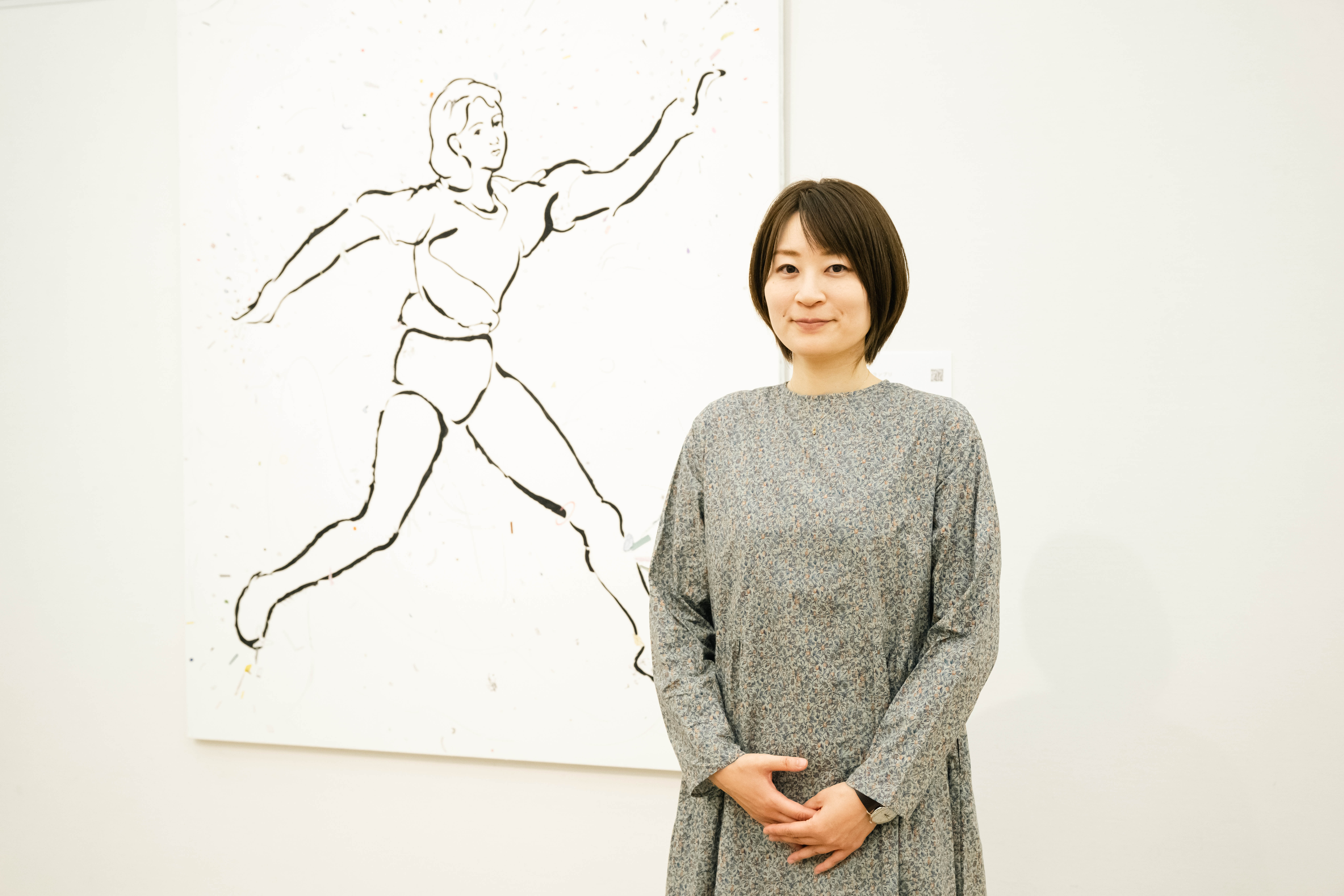
The "Idemitsu Art Award" sponsored by Idemitsu Kosan has become a place for young artists to take on new challenges. It is an open-entry art award for two-dimensional works by artists under the age of 40, and this marks the 53rd time since its predecessor, the "Shell Art Award," and the 3rd time since it was renamed the "Idemitsu Art Award."
In this year's "Idemitsu Art Award 2024," Asuka Sasamoto's "Access" was selected as the grand prize winner amid fierce competition with a total of 734 applicants and 922 works, exceeding last year's. Ahead of the "Idemitsu Art Award Exhibition 2024," which will introduce this year's award-winning and selected works, we spoke to Sasamoto about her thoughts on her winning work and her future plans.
From an admiration for manga to an interest in iconography
The judges for this year's award are: Oura Shu (Chief Curator, Museum of Modern Art, Saitama), Sachiko Shoji (Chief Researcher, National Museum of Art, Osaka), Takezaki Mizuki (Curator, Marugame-Inokuma Genichiro Museum of Contemporary Art), and Suga Ryohei (artist/lecturer, Faculty of Arts, Hiroshima City University).
"Access" by Asuka Sasamoto was unanimously selected as the grand prize winner, and was awarded 3 million yen. Ms. Sasamoto graduated from Tama Art University's Department of Painting, Faculty of Fine Arts, majoring in oil painting, in 2008 and continues to work as an artist based in Tokyo.
─ I heard you were born in Alaska. Can you tell us how you became an artist?
I only lived in Alaska for about two years after I was born because of my father's work, so I don't have any big stories to tell. However, I was influenced in no small way by the stories and photos I heard from my older siblings, and by the toys I brought back from overseas and played with.
I've loved drawing since I was a child, and I grew up being influenced by manga, anime, and games. As I imitated drawing manga, I became interested in iconography, and I began to aspire to attend an art university. I majored in oil painting at Tama Art University because I had experience painting in the art club in junior high school, and when I visited an art prep school, I felt that the oil painting department offered a wide range of expression.
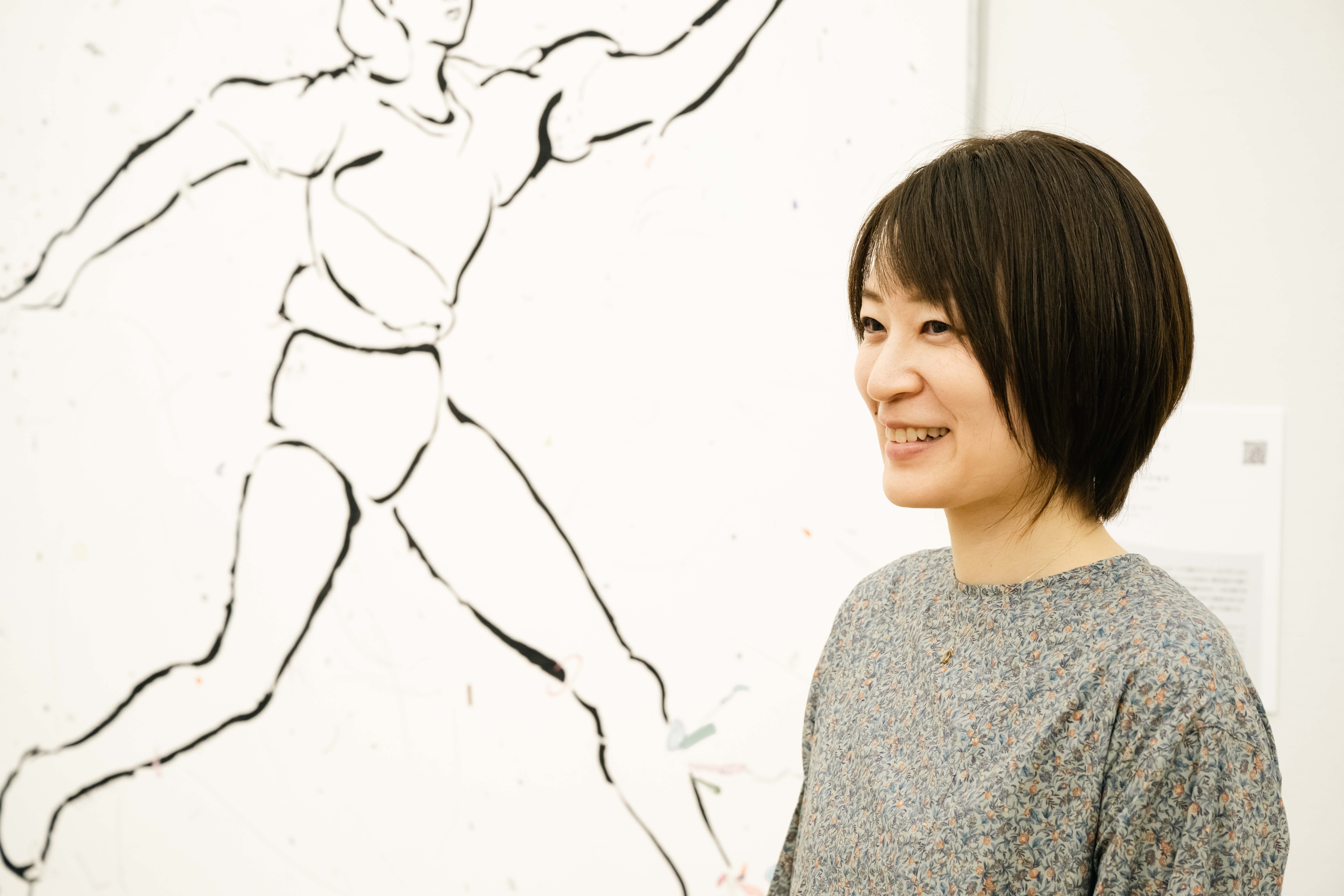
Asuka Sasamoto
--What kind of production did you do while you were a student?
As I continued to work with oil paintings, I began to search for the best way to express myself, and I tried a variety of approaches, such as painting paper clay with paint, pasting cloth onto the painting surface, and even pasting something onto the magazine itself.
In the process, I came to realize that printed images, such as diagrams in textbooks and reference books, have an impact on me, and I began to use the technique of quoting and creating collages of things that have influenced me.
─ Why did you decide to apply for the Idemitsu Art Award this time?
I learned about the Shell Art Award at art school, and some of my classmates at university were actively participating and some were selected and won, so it was also a source of information for me to learn about artists struggling in the art scene. Even after graduating, I continued to enter various open exhibitions as motivation for my work, and I have also had the experience of being selected.
However, I had never been selected for the Shell Art Award or the Idemitsu Art Award, and as this was my last chance due to the age limit, I applied with the goal of winning.
Transforming rejected works into collages
- How did you conceive your winning piece?
In fact, I submitted three large paintings to the Idemitsu Art Award two years ago, but all were rejected. This time, I used two of those paintings, peeled off the canvas, stuck them upside down, applied gesso, and painted on top of them to submit two works.
As for my technique, I felt uncomfortable with layering paint on the same layer as a single color surface, so I decided to go with the collage method that I have been working on for a long time. I felt the inevitability of considering the event of being rejected two years ago as one of the materials.
--So you created the new screen while retaining the time you spent on your previous work.
Yes. I made the base white and painted it as if I was drawing on paper. Up until now, in my paintings, I've always made the base with paint as a normal process, but I decided it would be better to go all out and start working on a white surface.
After graduating from university, I studied Photoshop at a storyboard company for commercials, and this experience gave me the idea that each material has a layer. The white screen in this work is close to the image of "transparency" in Photoshop, which represents "nothing on the layer."
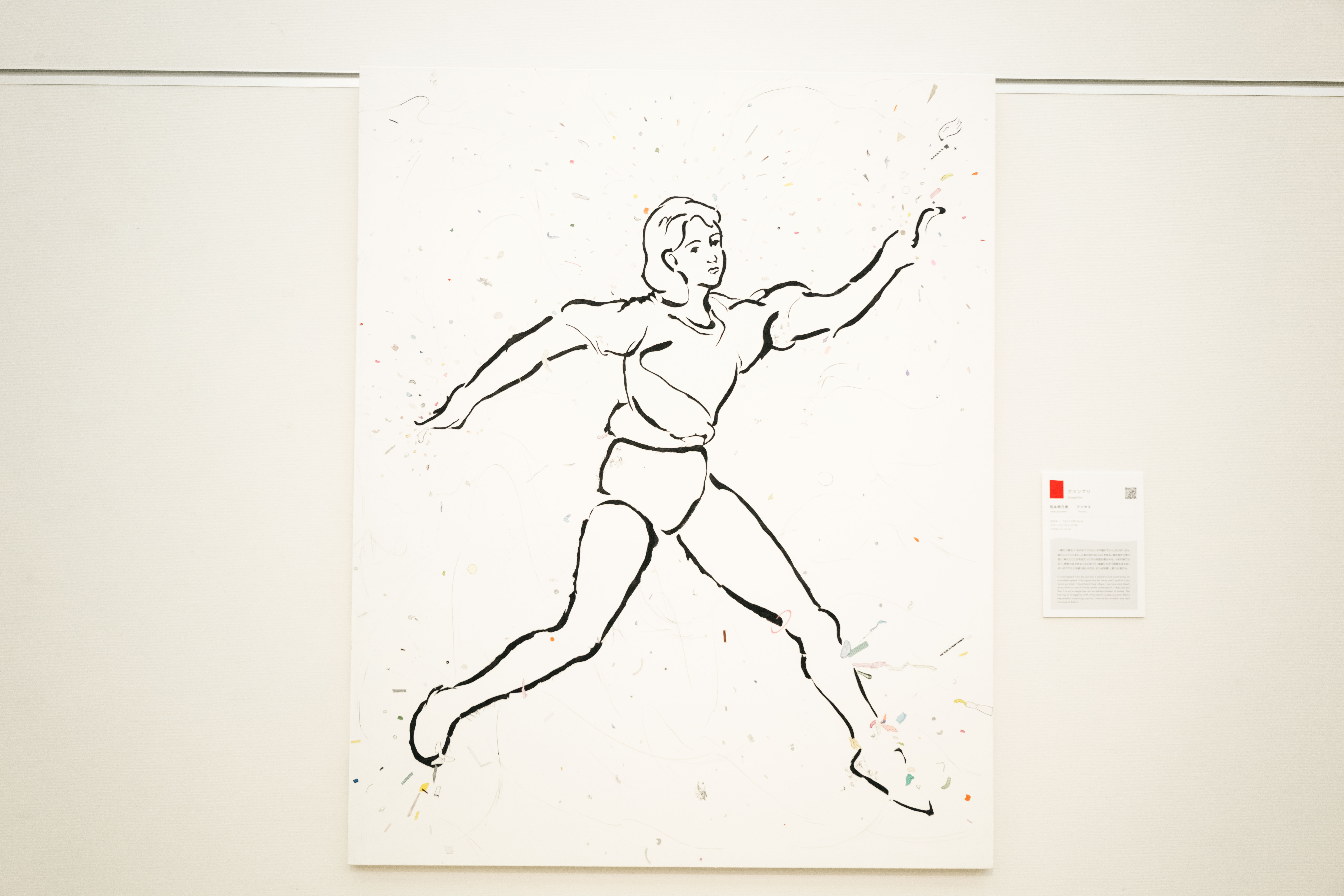
Asuka Sasamoto "Access" 2024 162 x 130.3 cm Collage on canvas
- How did you choose your portrait motifs?
It is based on an illustration in a physical education textbook that my brother used in junior high school. It has made a strong impression on me since I was a student, and I was inspired by the symbolism of this image and the nature of the creator's ego being detached. Rather than using the image from the textbook as is, I reconstructed it by partially combining, for example, the arms on the baseball page and the legs on the track and field page.
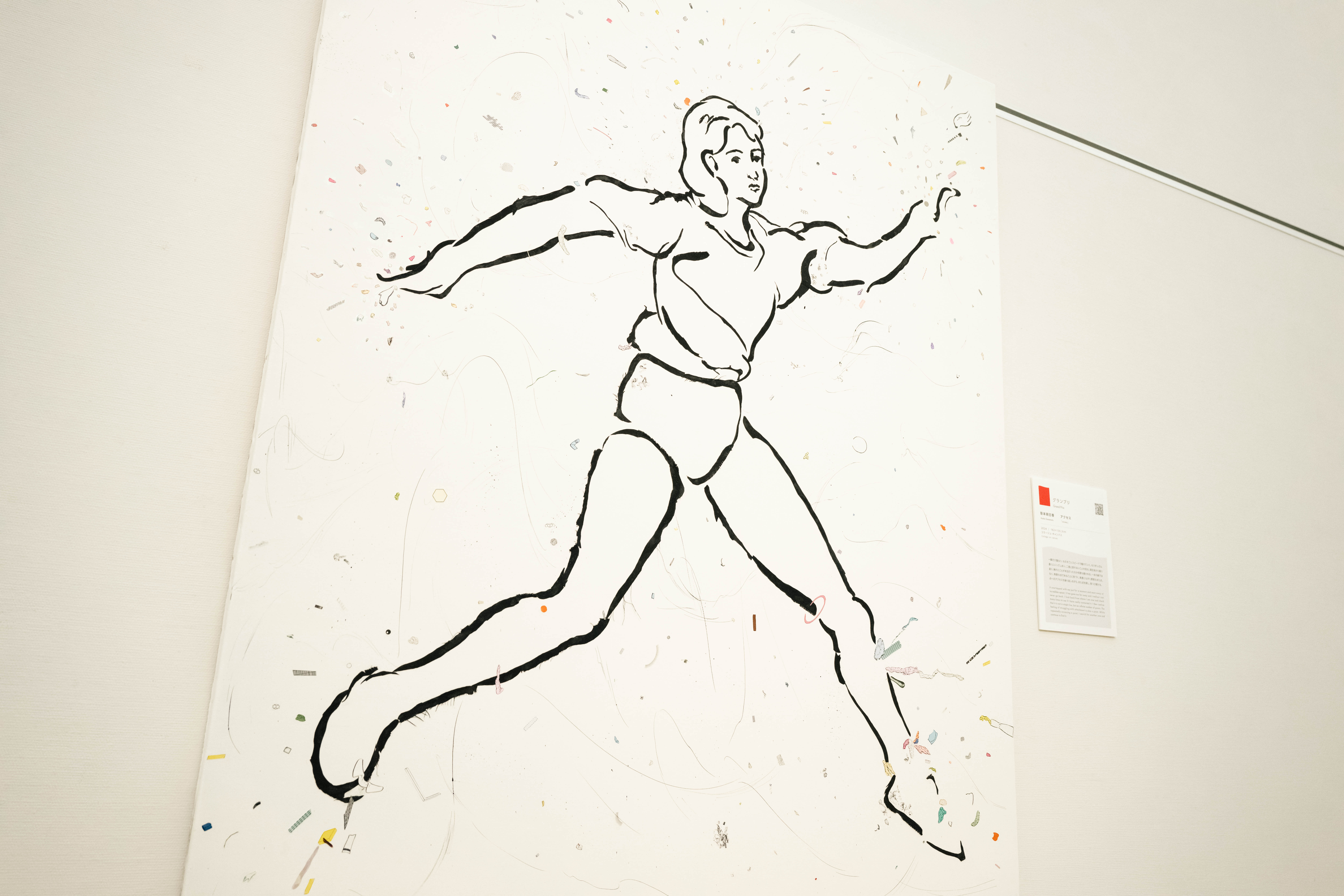
-- The twists in the bodies are really interesting. Is there a reason why you made the characters twist and wear gym clothes?
As an adult, I often think back on the uniqueness of school as a place. For example, the anonymity and symbolic feeling of uniforms. Gym clothes also left an impression on me as a symbol for the special ritual of physical education, and I wanted to use them as a symbol of the act of moving the body.
Instead of drawing with a brush and expressing it in strokes, I cut cloth colored with black paint with scissors to match the enlarged copy of the sketch, and pasted it onto the canvas as a line drawing. It was fun to see the undulations and expressions that I had never seen before.
--The figures are surrounded by a collage of small pieces of paper cut out from printed matter and other things.
I paste up the materials I like and have saved in my spare time. I incorporate into my work the things I've been through, such as the fantasy and obsession I had as a child of wanting to become a manga artist, the things that have influenced me up until now, my feelings and events, and so on.
I drew lines with a dip pen for manga, used screen tones that I hadn't been able to use, pasted in packaging from snacks and everyday items I had eaten in real life, and parts of my own drawings that I had done in the past. Some of the things I collected without even thinking about using them in this work are also included.
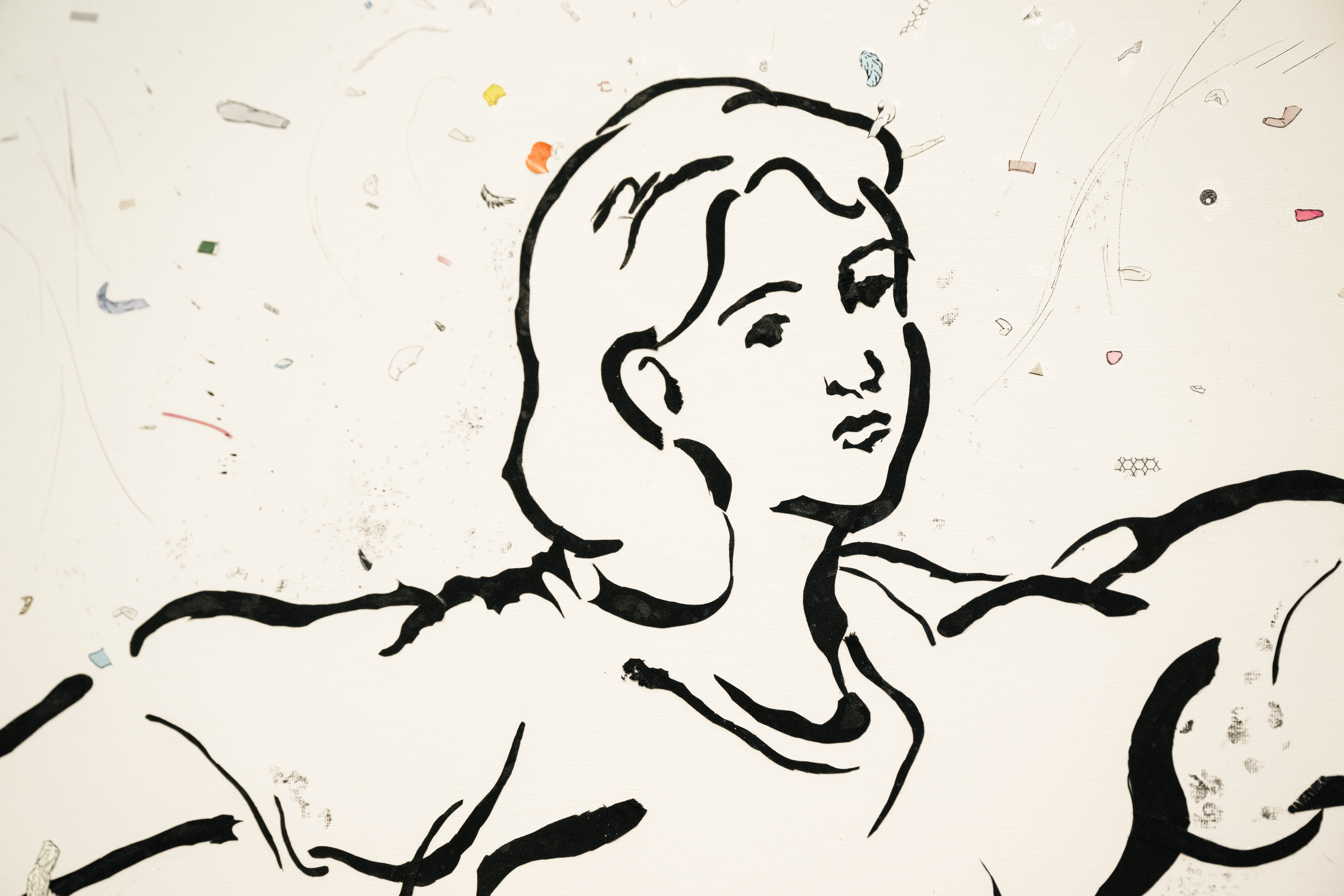
The outline of a person made of cloth. There are loose threads here and there.
--Is there any intention behind the placement of the parts?
The parts are arranged according to the desire to place another part here, or the repulsion of not wanting to place another part there. I tried to avoid a design-like appearance, and deliberately disrupted the balance of a painting, and partially brought out a narrative element.
--How did you decide to finish it?
On the last day, I stayed up all night, but at the end, I decided that in addition to the collage, I also needed to draw some lines, so I drew lines. I kept drawing until the last minute when the delivery truck came to pick up the works.
Actually, I thought that the size and composition of the collage in the other work I submitted would be easier to convey as a complete piece, so when I was notified that my work had won, I assumed that the other work had won until I heard the title (laughs).

Expressing the image of broken cells flowing like blood
The ambiguity of a sense of loss that slips through your hands and the feeling that you are already there
-- The title of the work is "Access." It looks as if you're reaching out into a whirlpool of information.
Yes, I imagine it as something like space debris. Things that you haven't been able to use, like the grime, impurities, and excrement of your life.
As I get older, I'm more and more aware of the fleeting nature of everything that happens, and I feel a sense of loss. Time passes quickly, and I feel like I'm fading away. Even if I try to grab hold of the things I don't want to forget or lose, they just disappear from my hands, hopelessly...
On the other hand, when I thought about where the things I am attached to come from and where they are going, I imagined that if the sensations and impressions I have had were to materialize and accumulate, they would amount to an immeasurable amount, and it felt as if I had not lost them, but rather that I was enveloped in a huge database that had continued to accumulate. I wonder if it is possible to think of myself as immersed in that huge "aqueous solution."
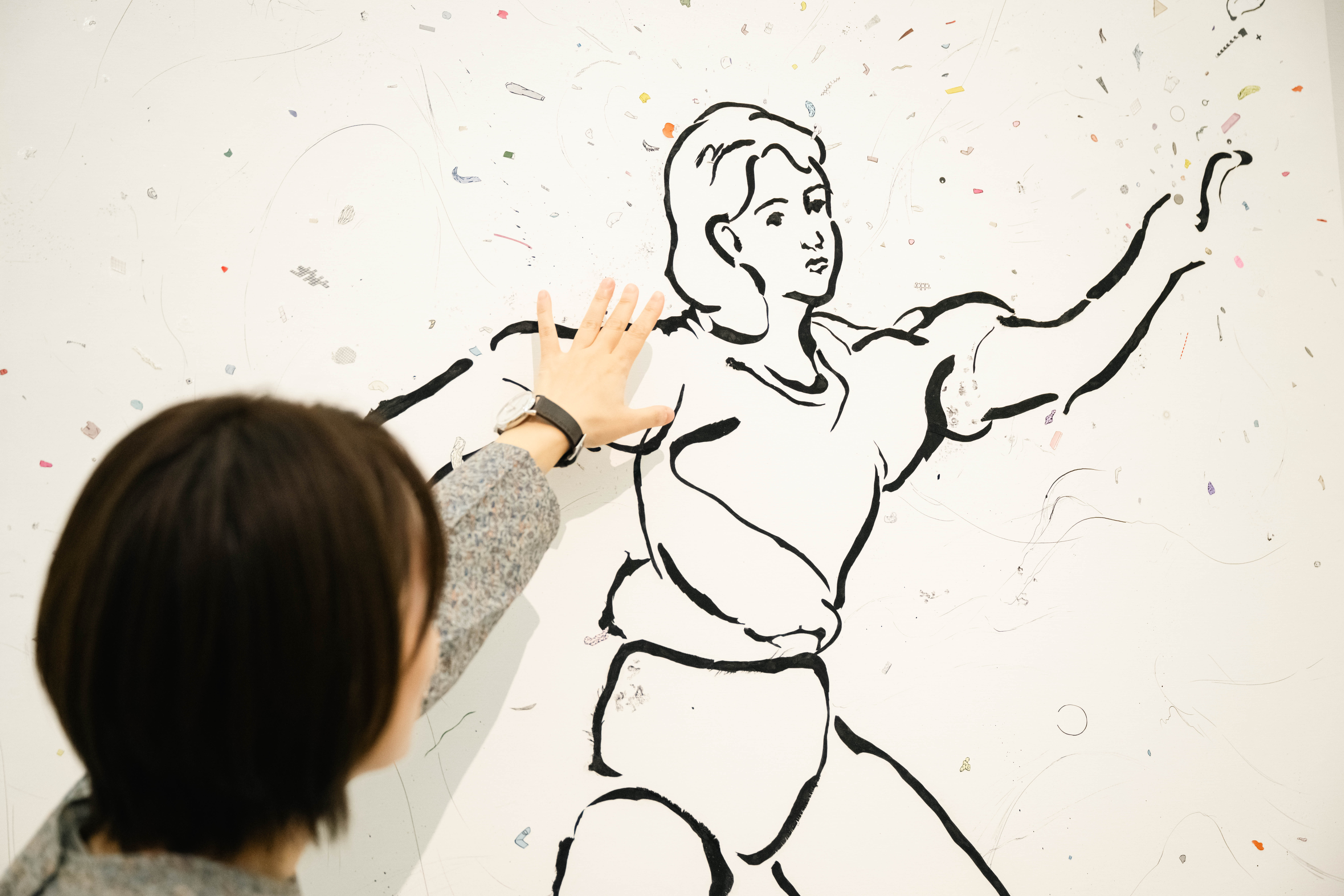
-Do you feel like it's not just negative, but positive as well?
Yes. I wanted to express the ambiguity of various qualities occurring at the same time, the attachment to trying to grasp it, the sense of loss, and the fact that it has not actually disappeared to the outside but is still possessed within oneself, a part of oneself. The sensations and impressions we have may come closer or farther away, but we can all feel them whenever we become conscious of them.
-- It would be interesting if viewers could create their own stories from each collage. The white background seems to encourage the viewer's imagination.
Yes. This white represents the empty space, the hopeless and immeasurable expanse. It is likened to something that seems to have substance but doesn't, such as outer space or a huge database inside a computer. I would be happy if those who see the actual work could freely superimpose their own images onto it.
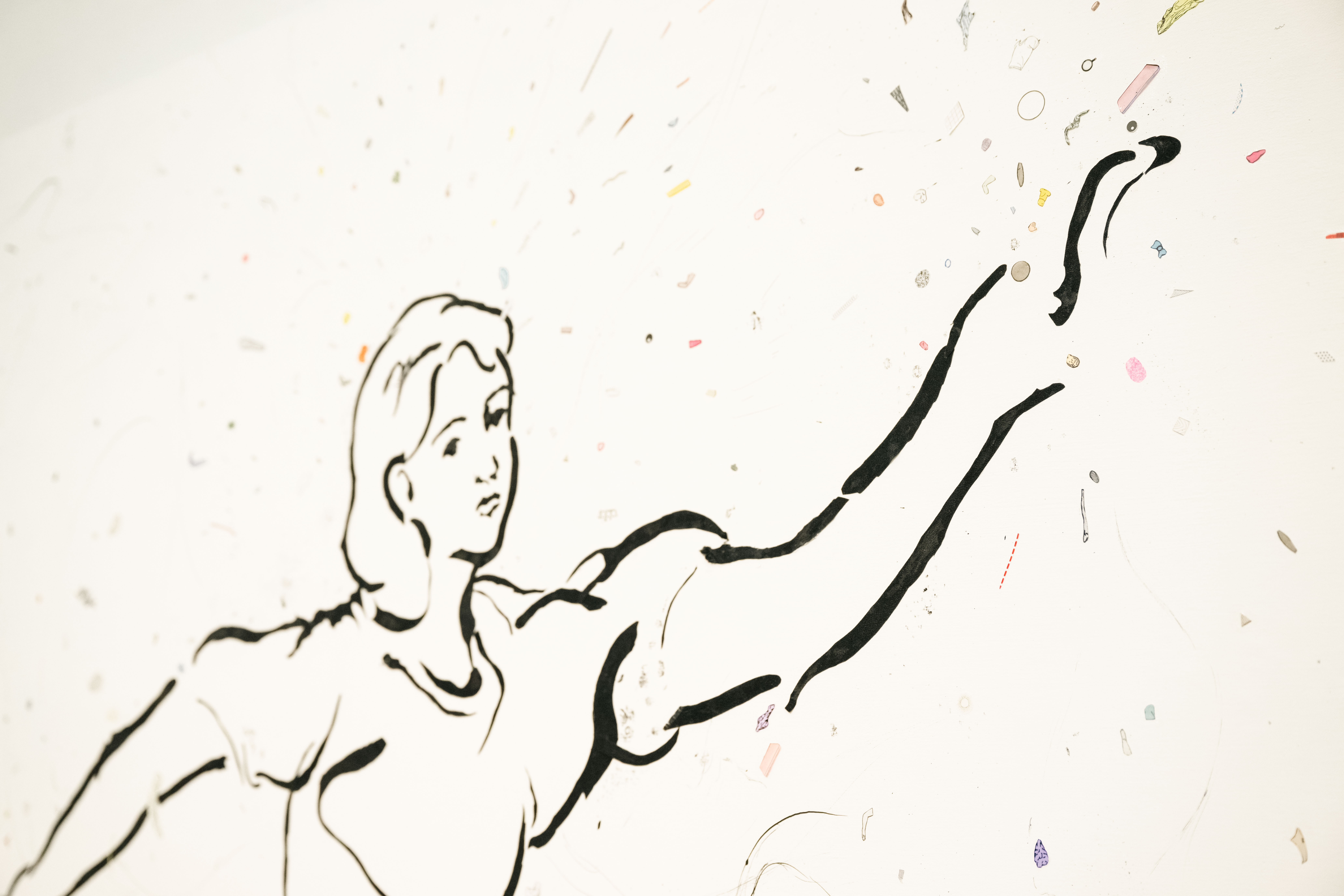
Expressing the ungraspable in a collage
-- I don't think there are many small collages that are this large.
Initially, I had envisioned drawing everything in collage, using overlapping paint colors. However, when I actually started pasting the pieces together, the gaps and white space came into play, and the imbalance of a small, detailed collage on a large screen turned out to be more interesting than I had imagined. I think I was able to break away from my own preconceived ideas about collage work.
At the exhibition, I would be delighted if people could actually see each and every piece with their own eyes and have them mix with the images that float in their minds, the kind of images that they unconsciously cut out in their everyday lives.
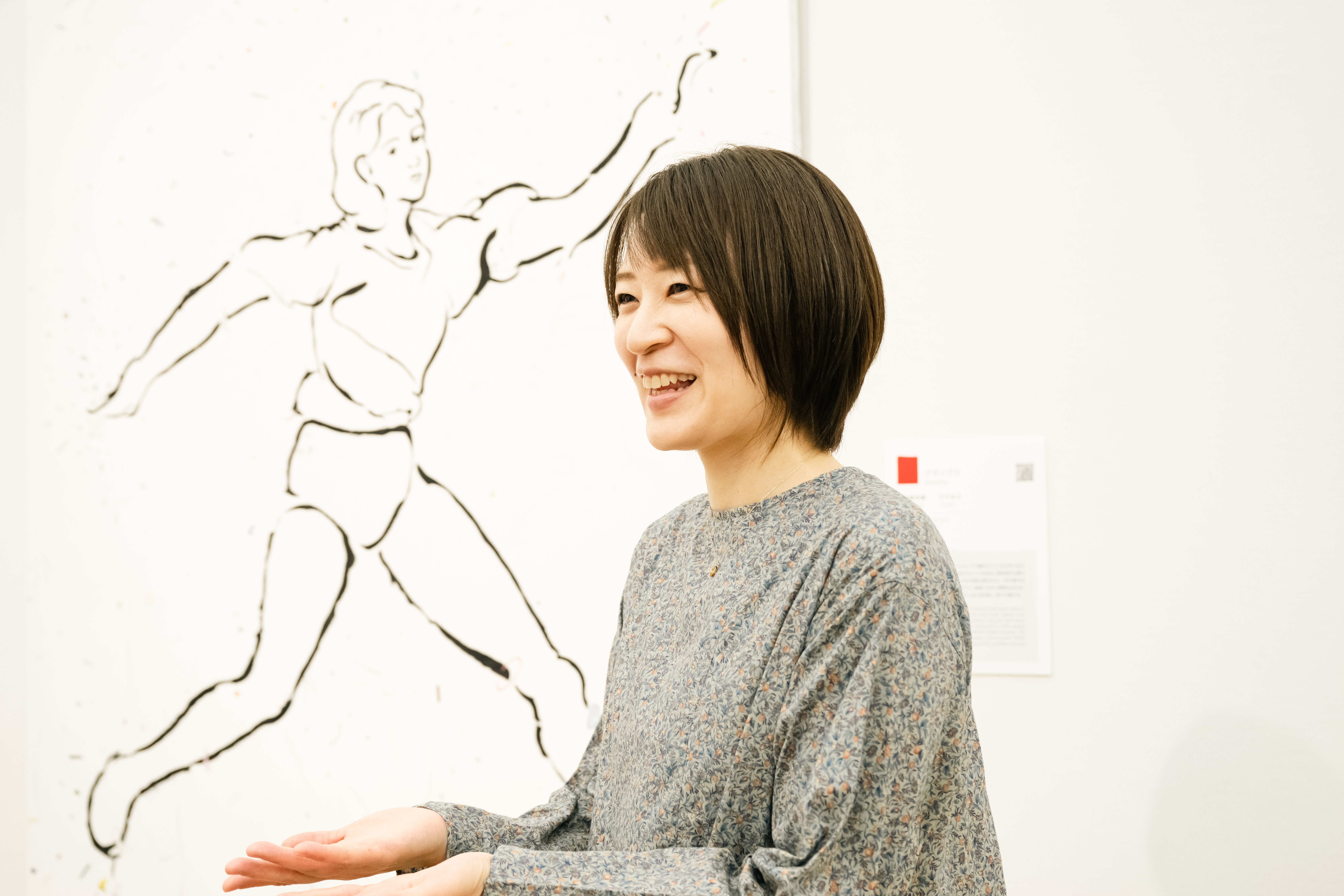
─ How do you want to continue your activities in the future?
I want to have fun and create using a variety of materials. After graduating, in addition to my two-dimensional works, I have also been working on installations such as three-dimensional works and videos derived from digital collages. I would like to continue creating and disseminating my work in a variety of media.
-- In the judges' comments this year, there were some who expressed a desire for two-dimensional works that go beyond traditional paintings, such as works that effectively use photography, prints, and other mediums. Perhaps your work, which combines a critical approach to painting with a collage technique that brings together things from the past, caught the eye of such judges.
Thank you. I had the impression that most of the winning works to date were painterly works that utilized overlapping colors of paint, so I was happy that you found my approach interesting.
-- Please give a message to those who will be applying for the Idemitsu Art Award.
I think one of the key points in creating a work is to be confident that your work is more interesting. Even if it is not selected, you can use the results as material for your own work and gain something that will lead to the next one. For that reason, I realized that it is important to create something that you find interesting honestly and thoroughly.
Another attraction of the Idemitsu Art Award is that the judges are curators who are at the forefront of art, and artists who are creators themselves. I think that by pitting works that offer new perspectives against one another, it will also lead to the revitalization of the art scene.
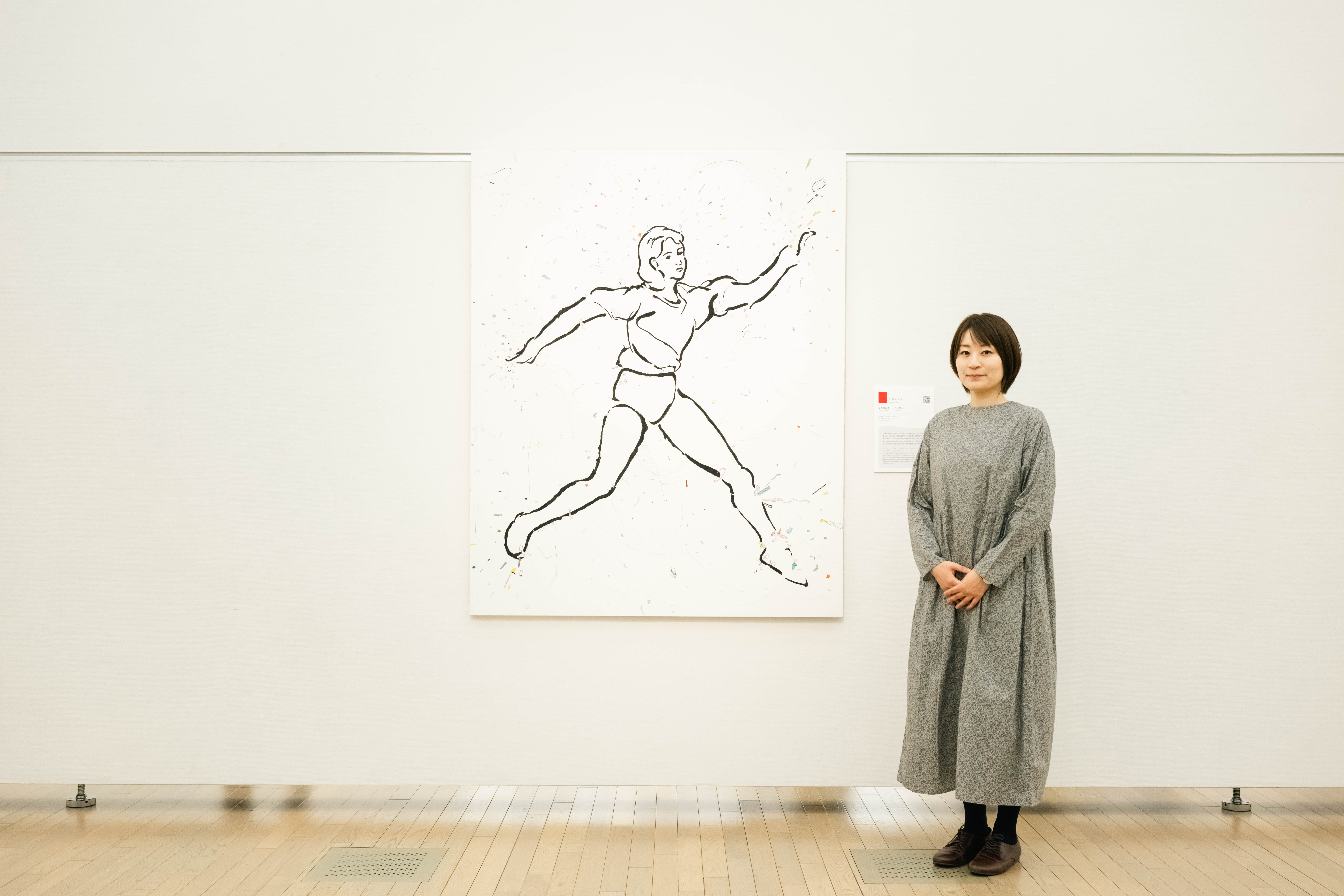
First published on the contest information site "Toryumon"
Interview and text: Yuri Shirasaka Photo: Yuta Kato
Edited by Mariko Iwabuchi (JDN)